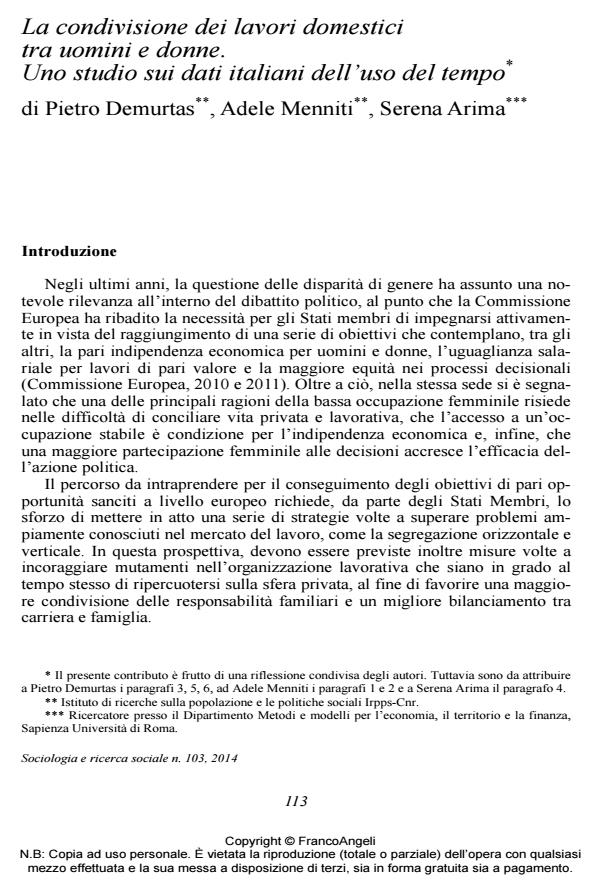The Division of Housework among Men and Women. A study on Italian Data of Time-Use
Journal title SOCIOLOGIA E RICERCA SOCIALE
Author/s Pietro Demurtas, Adele Menniti, Serena Arima
Publishing Year 2014 Issue 2014/103
Language Italian Pages 32 P. 113-144 File size 169 KB
DOI 10.3280/SR2014-103006
DOI is like a bar code for intellectual property: to have more infomation
click here
Below, you can see the article first page
If you want to buy this article in PDF format, you can do it, following the instructions to buy download credits

FrancoAngeli is member of Publishers International Linking Association, Inc (PILA), a not-for-profit association which run the CrossRef service enabling links to and from online scholarly content.
Among European countries, Italian couples show one of the widest gender gaps in housework division: Italian women still carry out three-quarters of family labour. Following the existing literature, this article focuses on three theoretical explanations of the persistence of the gendered division of unpaid work: time availability, relative resources, and conformity to traditional gender ideology. Time-Use data from the 2008/2009 Survey edition has been used to study the behaviour of Italian couples, married or living together, where the women are employed. The amount of time spent by men and women in domestic tasks has been modelled as function of several family characteristics and a Tobit model has been used in order to take into account the truncated nature of the dependent variables. Results show that the amount of time dedicated by women to housework significantly decreases when they take on the role of breadwinner, whereas the involvement in domestic tasks of male partners increases when they are unemployed. Therefore, in conformity with the expectations of relative resources’ hypothesis, Italian data shows a positive impact of the female financial capacity in reducing gender segregation in housework.
- La quotidianità in famiglia, tra riproduzione e superamento delle differenze di genere Pietro Demurtas, in WELFARE E ERGONOMIA 2/2017 pp.175
DOI: 10.3280/WE2015-002014 - Modelli di genere e attività domestiche: genitori e figli a confronto Pietro Demurtas, Adele Menniti, Loredana Cerbara, in SOCIOLOGIA E RICERCA SOCIALE 110/2016 pp.84
DOI: 10.3280/SR2016-110006
Pietro Demurtas, Adele Menniti, Serena Arima, La condivisione dei lavori domestici tra uomini e donne. Uno studio sui dati italiani dell’uso del tempo in "SOCIOLOGIA E RICERCA SOCIALE " 103/2014, pp 113-144, DOI: 10.3280/SR2014-103006